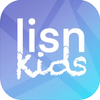12 Engaging Activity Ideas to Keep Kids Busy During School Breaks
Vacations: A Blessing and a Challenge
School holidays promise a break from rigid schedules, sleepy mornings, and endless homework. But for many parents, especially those juggling work and home life, they also bring a new kind of pressure: how do you keep your 6 to 12-year-old entertained, engaged, and happy during the break—without leaning too hard on screens or running yourself ragged?
The good news is: kids don’t need elaborate plans or expensive outings. What they crave most is connection, novelty, and a little freedom to explore. Below, you’ll find carefully thought-out ideas—some calming, others active—each designed to keep your child meaningfully occupied while giving you a bit of breathing room too.
1. Build a DIY Holiday Camp at Home
You don't need a backyard or a team of counselors to create a mini camp experience. Just a bit of structure and some imagination. Start the day with a ‘camp schedule’ including times for crafts, games, reading, and treats. Designate different zones in your home—art corner, reading nook, indoor fort. Having a loose plan gives kids something to look forward to while keeping the day flowing smoothly.
2. Embrace the Power of Audio Stories
Sometimes, your child needs a break from visual stimulation, and honestly, so do you. Audio stories can offer a calm mental retreat while still sparking thinking and curiosity. The iOS and Android versions of the LISN Kids App provide original audiobooks and adventure tales designed especially for kids ages 3 to 12. Whether your child is into mysteries, animals, or faraway lands, there's something worth diving into—perfect for quiet afternoons or car rides.

3. Set Up a Creativity Studio
Creative expression is more than just fun—it’s deeply therapeutic and confidence-building. Transform a corner of your kitchen or living room into a “studio”: stock it with scissors, glue, construction paper, paint, scratch paper, recycled materials, and fabric scraps. For inspiration, check out our guide to encouraging creativity at home, filled with accessible projects even younger siblings can join in.
4. Daily Draw Challenge
Give your child a small notebook or sketchpad and issue a daily drawing prompt: “draw your dream treehouse,” “create a new animal,” or “design a dessert.” This doesn’t just build artistic skills—it encourages focus, storytelling, and pride in finishing something daily.
5. Invent a Board Game Together
Instead of pulling out Monopoly again, why not create your own family game? Start with a theme your child loves—pirates, outer space, wizards. Design the board on cardboard, draft rules together, and—most fun of all—make your own dice and pieces. The process offers problem-solving, collaboration, and laughter in equal measures.
6. Plan an Indoor Treasure Hunt
This classic never gets old. Write a series of clues or riddles, hide small surprises (stickers, favorite snacks, tokens) around the house, and let the race begin. To increase the educational benefit, tailor the clues to your child’s age—math riddles, spelling hints, or story-based challenges can make it part fun, part brain boost.
7. Learn a New Skill Together
Have you ever tried origami? Simple sewing? Balloon animals? Use holiday downtime to learn something new, side-by-side. The important part isn’t mastering the skill—it’s sharing the laughs and fumbles. Sites like Pinterest or YouTube offer basic tutorials that are age-appropriate and easy to follow.
8. Create a Family Cookbook
Cooking with kids is messy but rewarding. Let them choose recipes, document your attempts, and photograph the final (or failed) outcome. Over the holiday, you’ll slowly build a 'Family Favorite Recipes Book'—cooked, written, and illustrated by them. It gives purpose to their screen time if used for looking up meals to prepare together.
9. Stretch and Breathe: Morning Family Yoga or Mindfulness
Kids often carry more tension than we realize. Starting the day with a few simple yoga poses or five minutes of guided breathing can help regulate moods and reduce screen-related anxiety. This is especially helpful for children who tend to become overstimulated during active holiday weeks. You’ll find free, child-friendly video routines suited for beginners—and this ritual just might stick year-round.
10. Play Sensory and Audio Games
Vacations are the perfect time to reintroduce play that engages the whole body and senses—especially if your child needs a break from academic pressure. Try homemade slime, sound-matching games, or taste-testing challenges with blindfolds. Head over to our sensory play guide for ideas that extend well beyond preschool ages.
11. Try a Tech-Free Day—Together
Designate one day a week as a tech-free adventure day. No screens (for them or you), just connection through nature walks, storytelling, and board games. Planning a tech-free day doesn’t have to feel limiting—it can actually be mighty freeing. Our article on how to create a screen-free day is filled with ideas and structure to make it a hit.
12. Educational After-School Style Challenges
Who says learning can’t sneak into the holidays? Introduce light, fun learning games inspired by real-world themes—like building a bridge with household items or creating an ad for a made-up product. These activities strengthen focus and resilience. Browse through our list of educational after-school activities that adapt beautifully to vacation days at home.
More Presence, Less Pressure
Above all, remind yourself that every day during school break doesn’t have to be perfectly productive or Instagram-worthy. Kids remember the silly dance parties, the dough that never rose, or the story you let them finish reading aloud. Structure helps—but it’s your presence, not a packed itinerary, that makes their holidays special.
So breathe easy, pick a few ideas that resonate, and let your family's vacation rhythm find its own flow. The goal isn't to fill every minute—it’s to slowly stack memories they’ll carry with them, long after vacation ends.
